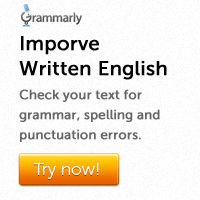Correct use of hyphen
June 6th, 2010 in Improve English, Punctuation
Hyphens are the short lines that we put between the words in expressions like ex-boyfriend and non-alignment.
Two-part adjectives
The hyphen is used in two-part adjectives when the second part ends in -ed or -ing.
I met a nice-looking girl.
He is the blue-eyed boy of the minister.
Other two-part adjectives which express the sense of ‘between’ are often hyphenated.
blue-green (= between blue and green)
The Anglo-French war
Phrases used as adjectives
Longer phrases used as adjectives in the attributive position (before a noun) are often hyphenated.
Compare:
He is an out-of-work lawyer. (Here the phrase out of work is hyphenated because it is used in the attributive position.)
He is out of work. (Here the phrase out of work is not hyphenated because it is used in the predicative (after a verb) position.)
In British English, two-word compound nouns are usually hyphenated, especially when the main stress is on the first word.
Compare:
A ‘paper-shop (Here the stress is on the first word.)
A paper bag’ (Here the stress is on the second word.)
The prefixes co-, non- and ex- are sometimes separated from the following word by hyphens.
non-alignment
co-production
ex-lover
The hyphen is also used to separate the parts of a long word at the end of a printed or written line.
Are hyphens disappearing?
Hyphens have started disappearing partly because the rules are complicated and usage not very clear. Many common short compound words are now written with no division between the words. Examples are: takeover, and wideawake. Longer compounds are now written as completely different words. Examples are: bus conductor, living room etc.
If you are not sure whether to use a hyphen or not, the best thing to do is to write the words without a hyphen.
